You assume your valve allows maximum flow, but your system is underperforming. The valve you chose could be choking the line, quietly reducing pressure and efficiency without you knowing why.
Not all PVC ball valves are full port. Many are standard port (also called reduced port) to save on cost and space. A full port valve has a hole the same size as the pipe for completely unrestricted flow.
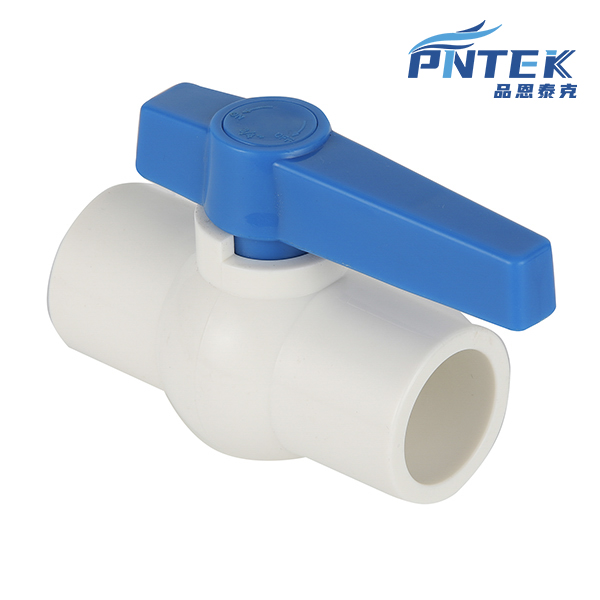
This is a critical detail in system design, and it is something I discuss often with my partners, including Budi’s team in Indonesia. The choice between full port and standard port directly impacts a system’s performance. For Budi’s customers who are contractors, getting this right means the difference between a high-performance system and one that does not meet expectations. By understanding this distinction, they can select the perfect Pntek valve for every job, ensuring customer satisfaction and building their reputation for quality work.
Is a ball valve a full port valve?
You need maximum flow for your new pump system. But after installation, the performance is disappointing, and you suspect a bottleneck somewhere in the line, possibly from the shutoff valve you used.
A ball valve can be either full port or standard port. A full port valve’s bore (the hole) matches the pipe’s internal diameter for zero flow restriction. A standard port is one pipe size smaller.
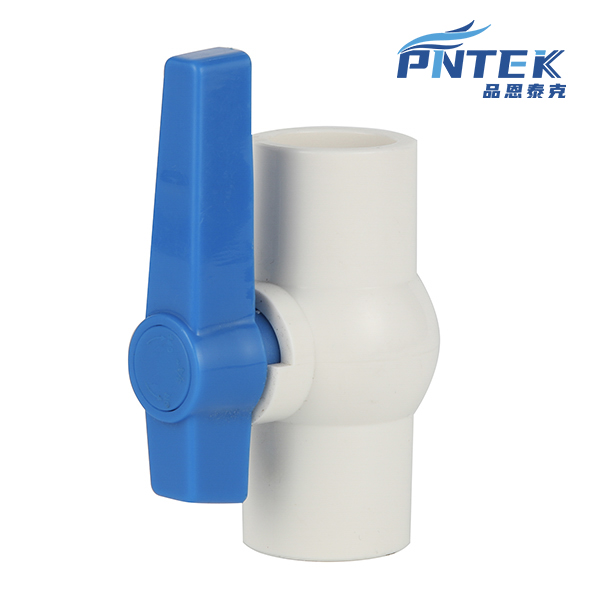
The term “full port” (or full bore) is a specific design feature, not a universal quality of all ball valves. Making this distinction is key to proper valve selection. A full port valve is designed for maximum flow efficiency. The hole in the ball is oversized to be the same as the inside diameter of the pipe it is connected to. A standard port valve, by contrast, has a hole that is one nominal size smaller than the pipe. This creates a slight restriction.
So, when should you use each one? Here is a simple guide I provide for our partners.
| Feature | Full Port Valve | Standard Port (Reduced) Valve |
|---|---|---|
| Bore Size | Same as pipe’s inner diameter | One size smaller than pipe’s ID |
| Flow Restriction | Essentially none | Minor restriction |
| Pressure Drop | Very low | Slightly higher |
| Cost & Size | Higher & Larger | More economical & compact |
| Best Use Case | Main lines, pump outputs, high-flow systems | General shutoff, branch lines, where flow is not critical |
For most everyday applications, like a branch line to a sink or toilet, a standard port valve is perfectly fine and more cost-effective. But for a main water line or the output of a pump, a full port valve is essential to maintain pressure and flow.
What is a PVC ball valve?
You need a simple and reliable way to stop water. Old-style gate valves are known to seize up or leak when you close them, and you need a valve that works every time.
A PVC ball valve is a shutoff valve that uses a rotating ball with a hole through it. A quick quarter-turn of the handle aligns the hole with the pipe to open it or turns it against the flow to block it.
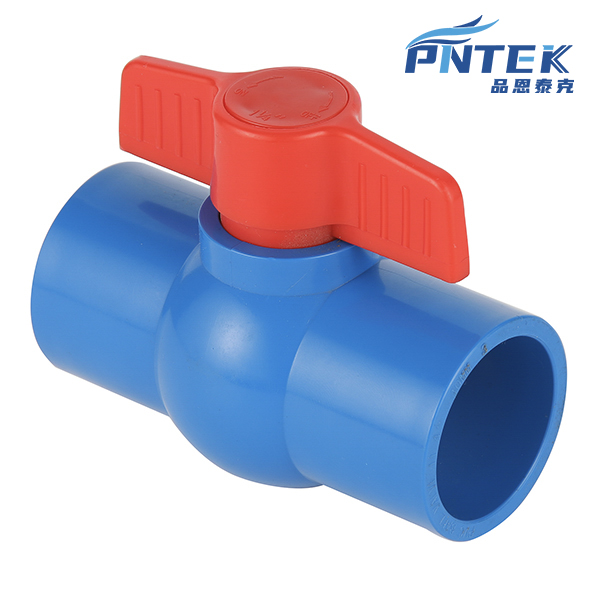
The PVC ball valve is popular for its brilliant simplicity and incredible reliability. Let’s look at its main parts. It starts with a durable PVC body that holds everything together. Inside sits the heart of the valve: a spherical PVC ball with a precision-drilled hole, or “bore,” through the center. This ball rests between two rings called seats, which are made from PTFE (a material famous for its brand name, Teflon). These seats create a watertight seal against the ball. A stem connects the handle on the outside to the ball on the inside. When you turn the handle 90 degrees, the stem rotates the ball. The position of the handle always tells you if the valve is open or closed. If the handle is parallel with the pipe, it is open. If it is perpendicular, it is closed. This simple, effective design has very few moving parts, which is why it is trusted in countless applications worldwide.
What is the difference between L port and T port ball valves?
Your project requires you to divert water, not just stop it. You are planning a complex network of pipes and valves, but you feel there must be a simpler, more efficient solution.
L port and T port refer to the shape of the bore in a 3-way ball valve. An L port diverts flow between two paths, while a T port can divert, mix, or send flow straight through.
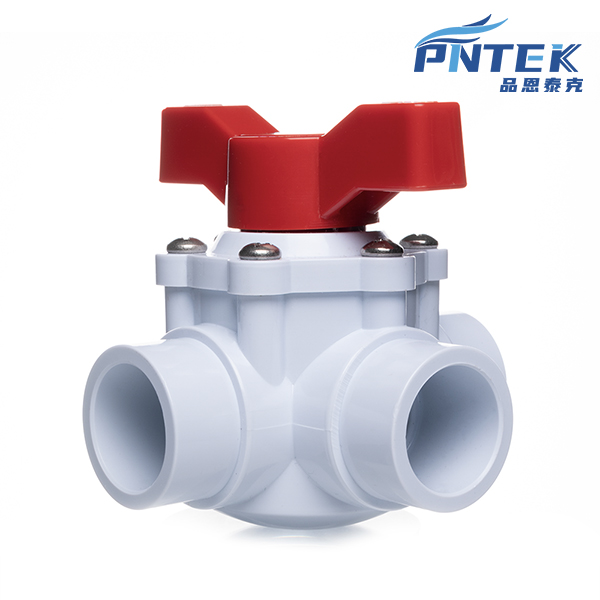
When we talk about L and T ports, we are moving beyond simple on/off valves and into multi-port valves. These are designed to manage flow direction. They are incredibly useful and can replace several standard valves, saving space and money.
L-Port Valves
An L-port valve has a bore shaped like an “L.” It has a central inlet and two outlets (or two inlets and one outlet). With the handle in one position, flow goes from the center to the left. With a 90-degree turn, flow goes from the center to the right. A third position blocks all flow. It cannot connect all three ports at once. Its job is purely to divert.
T-Port Valves
A T-port valve is more versatile. Its bore is shaped like a “T.” It can do everything an L-port can. However, it has an extra handle position that allows flow straight through two opposite ports, just like a standard ball valve. In some positions, it can connect all three ports at once, which makes it perfect for mixing two liquids into one outlet.
| Port Type | Main Function | Connect All Three Ports? | Common Use Case |
|---|---|---|---|
| L-Port | Diverting | No | Switching between two tanks or two pumps. |
| T-Port | Diverting or Mixing | Yes | Mixing hot and cold water; providing bypass flow. |
Are plug valves full port?
You see another type of quarter-turn valve called a plug valve. It looks similar to a ball valve, but you are not sure how it performs in terms of flow or long-term reliability.
Like ball valves, plug valves can be either full port or reduced port. However, their design creates more friction, making them harder to turn and more likely to stick over time than a ball valve.
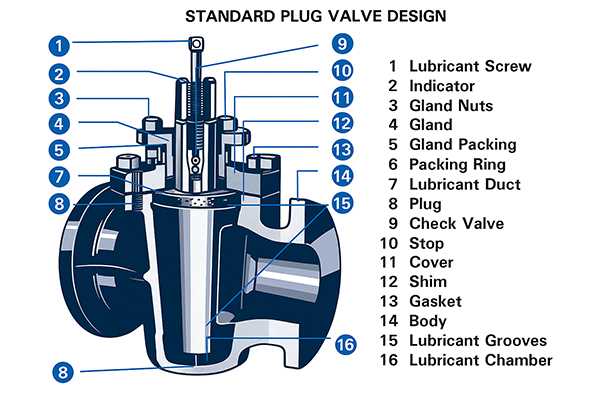
This is an interesting comparison because it highlights why ball valves have become so dominant in the industry. A plug valve uses a cylindrical or tapered plug with a hole in it. A ball valve uses a sphere. Both can be designed with a full port opening, so in that regard, they are similar. The key difference is in how they operate. The plug in a plug valve has a very large surface area that is in constant contact with the valve body or liner. This creates a lot of friction, which means it requires more force (torque) to turn. This high friction also makes it more prone to seizing up if it is not used regularly. A ball valve, on the other hand, seals with smaller, targeted PTFE seats. The contact area is much smaller, resulting in lower friction and smoother operation. At Pntek, we focus on the ball valve design because it offers superior sealing with less effort and greater long-term reliability.
Conclusion
Not all PVC ball valves are full port. Always choose full port for high-flow systems and standard port for general shutoff to optimize performance and cost for your specific needs.
Post time: Sep-05-2025




